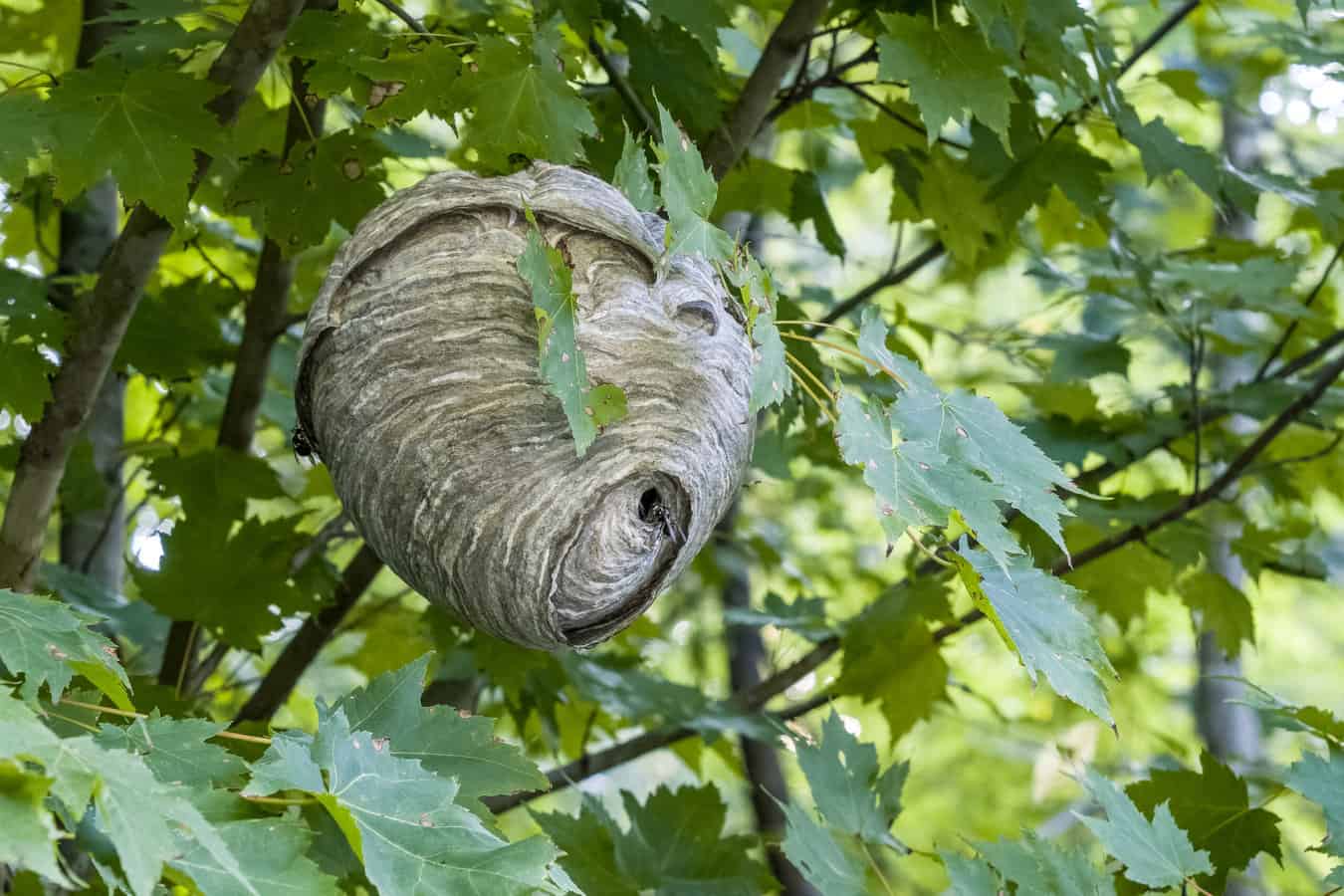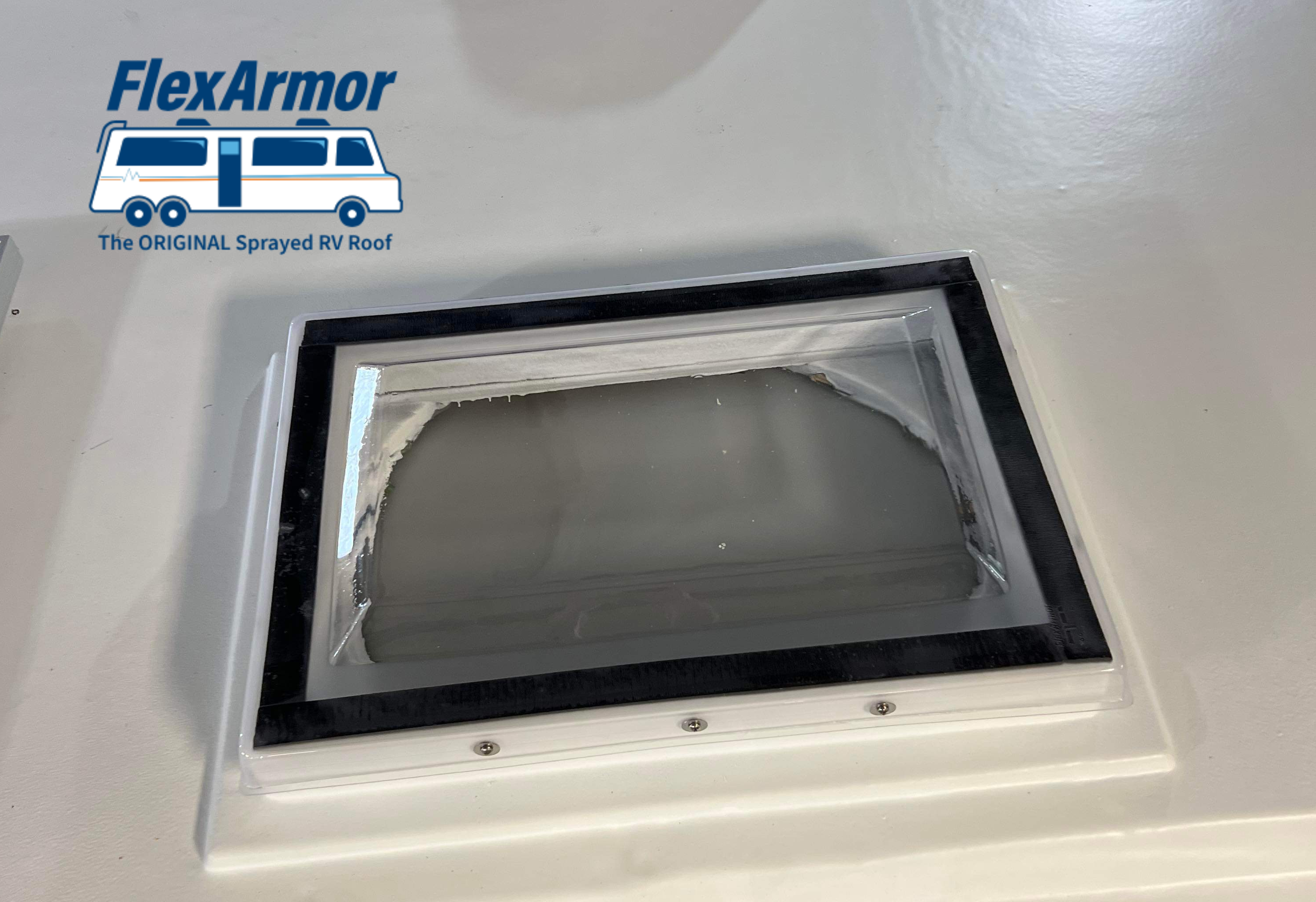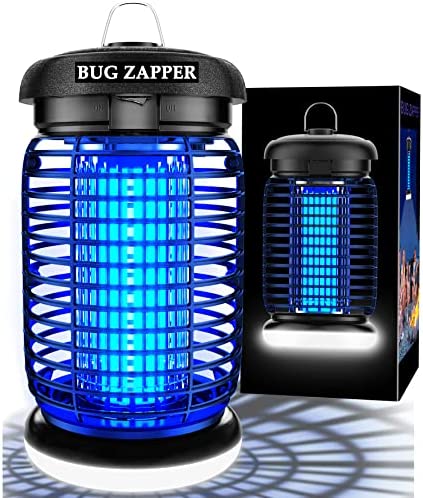
There Are Many Different Types RV Pets
When you think of RV pets you typically think of dogs, but in our travels, we have met people whose traveling companions include a variety of pets including a 55-year-old tortoise, parrots and other birds, ferrets, cats, dogs, and a lizard. But for the sake of this article, I will be speaking primarily about the tiny hazards to dogs and/or cats that are often ignored by pet owners.
Various Dangers
This is not a comprehensive list of dangers. There are all kinds of other hazards for pets besides this narrow list of tiny invaders, like an air conditioner that fails when a pet is left alone in an RV, or other people’s aggressive pets, or threats from wild animals and any number of other human or naturally occurring hazards. In our 22 years of RVing, we’ve camped in places where eagles, cougars, and marauding packs of coyotes were a real threat to small pets. We watched a dog on a leash viciously attacked by another dog who jerked its stake out of the ground just before the attack.
We’ve seen people speeding through a campground unaware that a 30 lb. tortoise was crossing the road just around the bend. There are many pet hazards caused by people, animals, weather, and other circumstances, but this article is about tiny, sometimes invisible, living organisms that can be dangerous or even deadly to our pets.

Microscopic Threats to Your RV Pets
These hidden dangers are ubiquitous and include ticks, fleas, parasites, fungus, bacterium, and venomous creatures. You may find yourself traveling in regions that are different from your home base and your pets may be exposed to a host of living organisms that are new to them. Local animals may have developed some resistance to these pests, but your companions might not have any natural resistance or fear, so they are more apt to be harmed by these organisms.
Fighting Fleas Naturally
After spending several months on Vancouver Island BC, Canada we arrived back in Oregon with a full-blown flea infestation in our dogs and our motorhome. Many years before, our vet administered a systemic chemical flea repellent and heartworm medication, at the same time, to both of our dogs. They immediately had severe reactions to these chemicals, and we nearly lost them both. For us, that was the end of our use of chemical flea repellants, so we had to fight this flea problem naturally.
Two of our dogs were suffering terribly from the side effects of the flea bites which can cause worms and other intestinal disorders, as well as, irritations to their skin. To manage this infestation, we washed everything repeatedly, including the dogs, and we used a natural flea soap and other treatments recommended by a holistic vet. We treated them internally and externally, and waged war against the bugs in our RV with Diatomaceous Earth. It took vigilance and time, but we won the battle, the fleas were defeated, the dog’s coat and health returned to normal, and it was a great lesson to be more vigilant about fleas.
Ticks and Lyme Disease
Ticks are a different threat. They don’t take over a living space like fleas, but they are a serious threat to you, as well as your RV pet. Besides being incredibly icky, ticks transmit Lyme disease via a parasitic bacterium that lives in them. Lyme disease is a very serious illness which may result in long term debilitation. Diatomaceous Earth and Wondercide are good natural treatments and repellants for both fleas and ticks but the best way to manage ticks is to check your pet’s whole body regularly for ticks and remove them promptly. Ticks need to be attached for about 36 hours to transmit the bacteria that causes Lyme Disease.
Salmon Poisoning from a Parasite
Another dangerous threat is salmon poisoning. It’s a complicated set of circumstances that leads to this potentially deadly parasitical infection which is brought on when a dog ingests raw or under cooked salmon, trout, steelhead, or Pacific Salamanders. To get salmon poisoning, the fish needs to first be infected by a specific parasitic fluke (flat worm), that subsequently is infected with a specific bacterium. It is this bacterium delivered through a living flat worm into a dog’s intestines, that causes this fatal condition. Even one curious lick by your dog of a bit or infected raw salmon or trout could result in its death.
The symptoms of salmon poisoning are very similar to the symptoms of Parvo and it should be taken seriously because salmon poisoning can kill a dog within two weeks of exposure. Cats are generally unaffected by salmon poisoning and fully cooked salmon is not a threat to your pets because it kills the flukes and bacteria. Salmon poisoning symptoms include a fever over 104, depression, anorexia, vomiting, diarrhea, nasal or eye discharge, and/or weight loss.
Tiny Dangers
These parasites are most common in Oregon, Washington, and the southern portions of Vancouver Island, so you can imagine our terror when we discovered that Vancouver Island eagles were catching live salmon in the Queen Charlotte Strait and were standing on a branch in the fir trees right over our RV and x-pen eating these freshly caught salmon. As they ate the fish, they dropped bits of salmon guts and remnants right into our x-pen. On one occasion, I found an entire carcass, (part of the head, tail and the spine) lying right beside our motorhome. Other bits were salmon roe and skin. We often heard large pieces of fish dropping out of the Eagles grip and onto the roof of our motorhome.
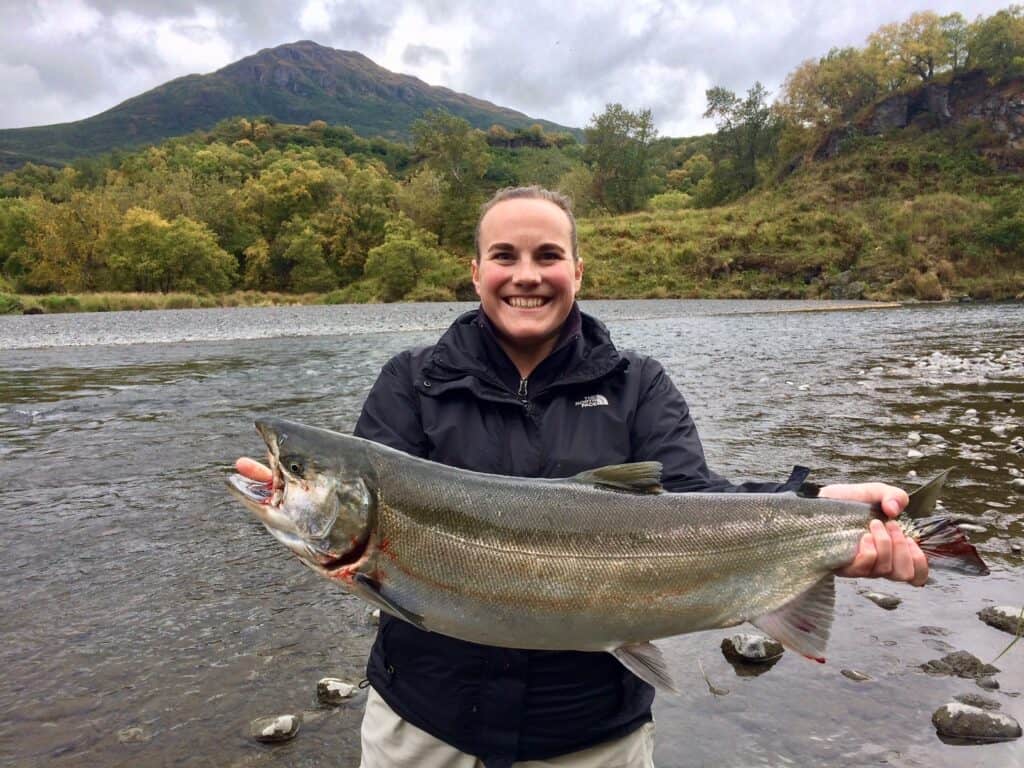
Keeping a Watchful Eye on the RV Pets
That is just one more reason our dogs were never permitted to be in the x-pen unsupervised. After discovering the salmon bits and before talking to a local vet we would scour the x-pen every time we were ready to let the dogs out. We camped in this park in Port McNeil BC for several months but wouldn’t even take our dogs for walks in this park, because it was full of fishermen who casually cleaned their fish leaving raw fish guts, scales, heads, entrails, etc. on the ground in and around the campground. They would eventually clean-up their mess, but the invisible salmon poisoning hazard was still present.
Salmon poisoning transmissible fish are common in Oregon and our vet had warned us repeatedly of this danger. We were so acutely aware of it, that our concern approached paranoia. We wouldn’t even buy raw salmon to prepare for our own consumption. So, the behaviors of the eagles and fishermen were a huge concern until we talked to a Port McNeil vet and learned that the northern regions of Vancouver Island don’t have problems with salmon poisoning. In his entire career, he had never treated a single dog in Port McNeil for salmon poisoning and he admitted that his own dog would “scarf down” anything it found on the beach when they went for walks.
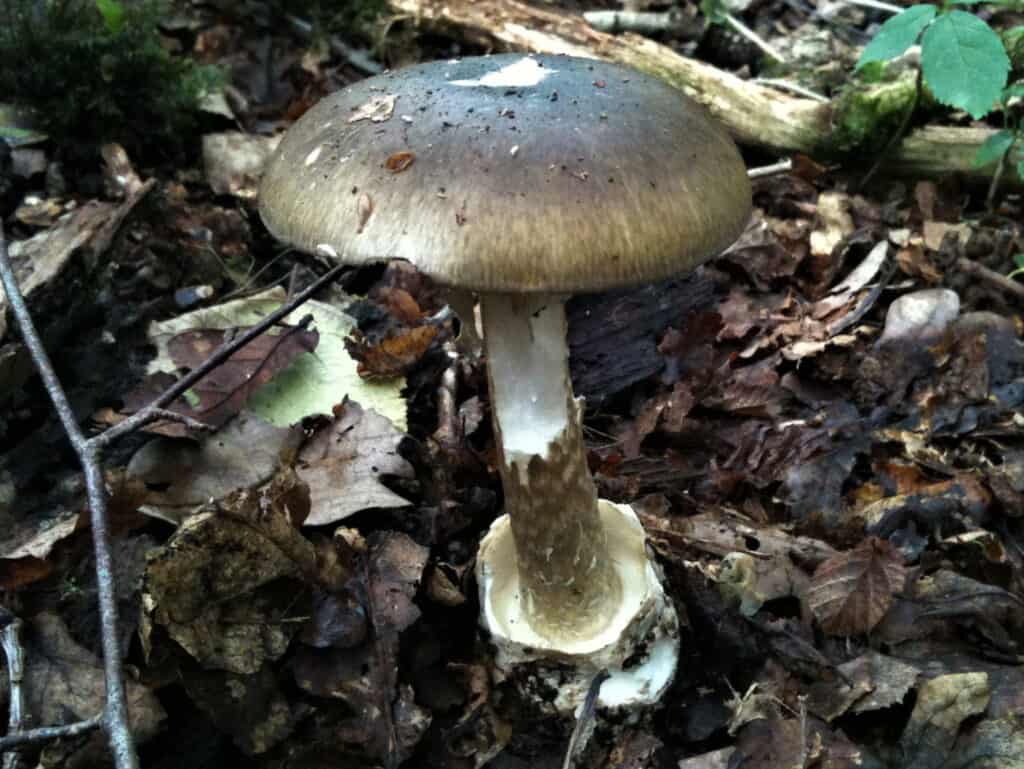
Fungus
Learning that the dogs were not in danger of salmon poisoning in our campground was a huge relief until we went to a local fair and learned about the deadliest mushroom called the Death cap mushroom, which was gaining prominence in and around Port McNeil BC. Now the biggest threat wasn’t a parasite, it was a fungus.
Dogs and cats are curious and may take a bite out of a bit of salmon or a mushroom or even a bug, nut, or seed. It happens quickly, and we all need to keep a watchful eye on our RV pets to make sure they are not eating something they shouldn’t, but not all parasites or fungus are visible and there are literally millions of different fungi other than mushrooms, in our environments.
Regional Variations in Fungi Can Make RV Pets Sick
On several occasion we’ve traveled to a new region of the country and had multiple dogs (we traveled with 4 for several years) get sick all at the same time. They would be fine until we established a campsite in a new region of the country. Then one or more would get diarrhea or start vomiting. They could all be healthy up to that point, then suddenly two or three would start to manifest these symptoms, and often within a few days they would all go through this stage. Eventually their immune systems would adapt to the new environment and their digestive disorders would disappear. Sometimes we’d leave the place that brought on the distress, sometimes we’d stay long enough for the dogs to recover on their own.
Repeated Reaction to New Microbes
This happened several times, and we began to suspect that it was either a reaction to an herbicide, or new fungus (there are literally billions of unique fungi in the world) that was causing the distress. Either explanation was plausible. We would arrive in a new location, and within a day or two, they would start to manifest these symptoms. We hadn’t changed their food or routines or anything else and typically more than one dog would be affected so we deduced that it was an environmental hazard. In the long run, all these unique exposures were probably making their immune systems stronger but dealing with a couple of dogs that had digestive issues in an RV was challenging.
Another Dangerous Bacterium from Blue Green Algae
On the subject of environmental hazards, there is one that is much more frightening than a dog or cat throwing up or having diarrhea, and that is the danger of blue green algae. When this bacterium is blooming it is often visible, but it can be just as dangerous when you can’t see it. It is most common in shallow, warm, still, water, and it is dangerous to both RV pets and people. The bacteria that cause blue green algae is also common on land and it fits into an important niche in nature.
Encountering a few Cyanobacteria (the bacteria that cause Blue Green algae) in nature will probably not cause any sickness because it is a toxin, released during the bloom cycle, that is dangerous. In the water where the bacterium can cluster up into a mass and bloom, the danger is extreme. The rule of thumb for both humans and pets is, “where there’s any doubt, stay out”.
More Tiny Dangers
Ingesting even a tiny amount of Microcystin, which is the toxin created by the bacteria, is very dangerous. Contamination is measured in parts per billion (ppb). At .8 ppb, pets are at risk. At 8.0 ppb humans are at risk. The bottom line, if you aren’t familiar with a water source, or you’re in doubt don’t take any chances. This toxin is not always present, and the bacterium is not always visible but when the toxin is present it is extremely dangerous. There are enough hazards for our pets without exposing them to deadly blue green algae.
Biting and Stinging Venomous Creatures
Pet owners often overlook the hidden dangers of letting their dogs run loose through the woods. We look around and don’t see any other pets or people and think this might be the perfect opportunity to let them stretch their legs, run free, sniff, and generally just be dogs. I’ve done it, and I suspect if you own a dog, you have too, but the hazards in this activity are real. Dogs are guided by their noses, and they are curious. A snake, porcupine, or scorpion might be unobserved by us, but the dogs might hone in on the scent, and be within the striking distance of those creatures before we even know they’re in danger.
If an RV pet is bitten by a snake or stung by a scorpion, seek veterinarian care immediately. Shea Cox DVM recommends keeping your pet calm, do not attempt to remove the venom, or use a tourniquet, or “bleed” the wound. You could actually make the problem worse. Anti-venom serum is expensive but effective and should be administered by a vet. They will monitor your pet for 12 -to 24 hours, administering fluids, and anti-venom serum, as needed. A venomous bite is a terrifying natural hazard, but it does happen, and you should know what to do if it happens to your pet.
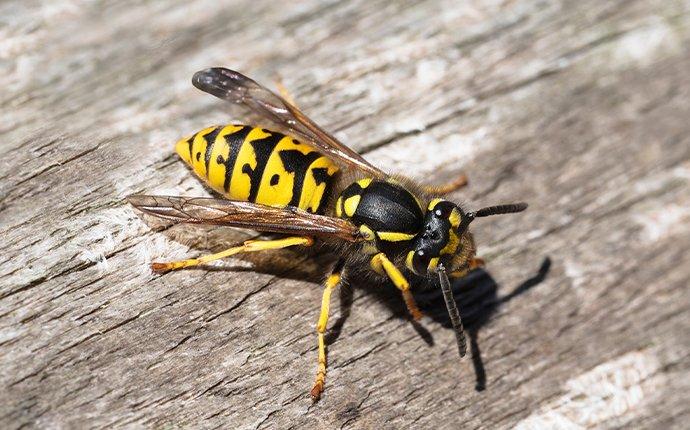
Stinging Bees
Another hidden threat to RV pets are hives of yellow jackets, wasps, or hornets. It is very common to find beehives in the ground or in the debris on the forest floor that is within reach of your dogs. They could easily disturb these nests resulting in a vicious attack by an angry hive.
Imagine being out in the woods with your dogs and all of you are under attacked by a swarm of angry bees. It makes me shudder to think what the dogs might have to do to get away from the bees, and how helpless I would be to protect them and myself. The venom of a bee sting is very similar to the venom of a snake bite. If your dog is stung multiple times, it would be wise to seek professional help, like you would do for a snake bite.
Many Dangers in Nature for Our RV Pets
It can be a dangerous world out there for our RV pets. We don’t need to be overly concerned, but protecting them will require us to be more aware, watchful, and cautious. We must keep ourselves and our pets safe from snakes, scorpions, stinging or biting insects, fleas, ticks, mushrooms, bacteria, and fungus. After we’ve done all that, then let’s just go ahead and enjoy our RV adventures.
The post 6 Hidden Dangers for RV Pets Found in Nature. appeared first on Camper Report.


